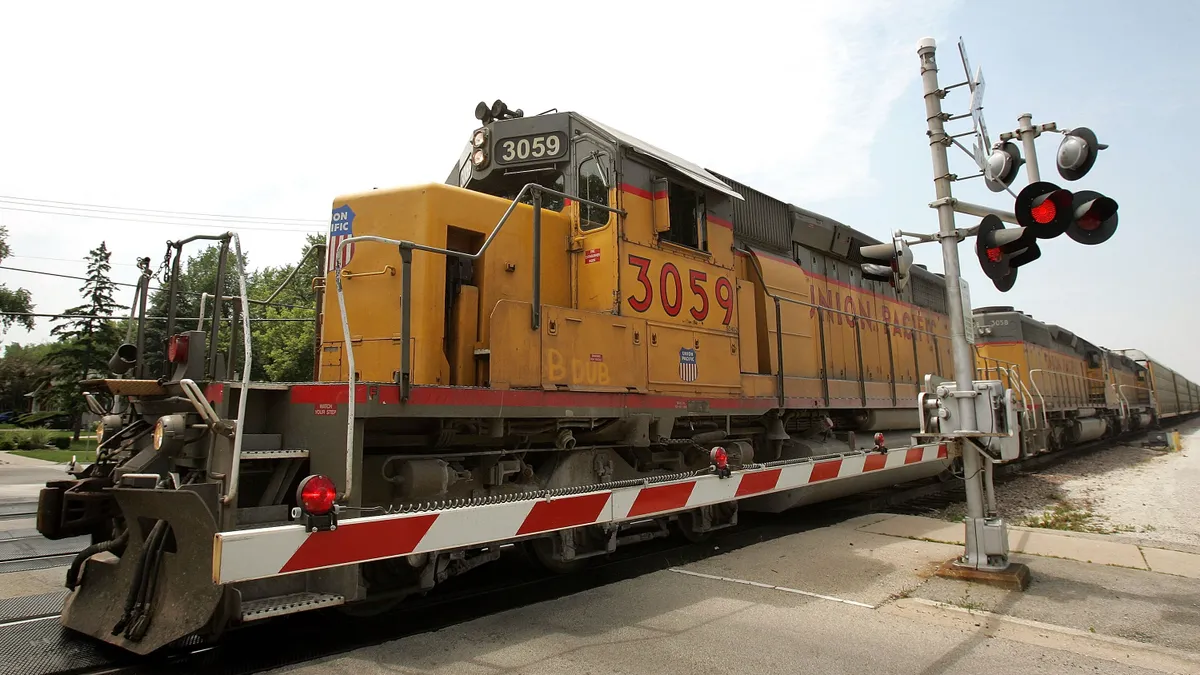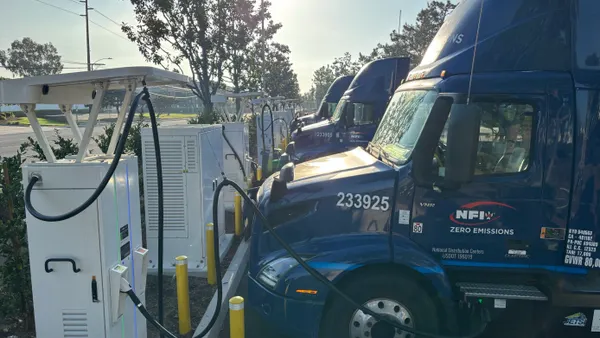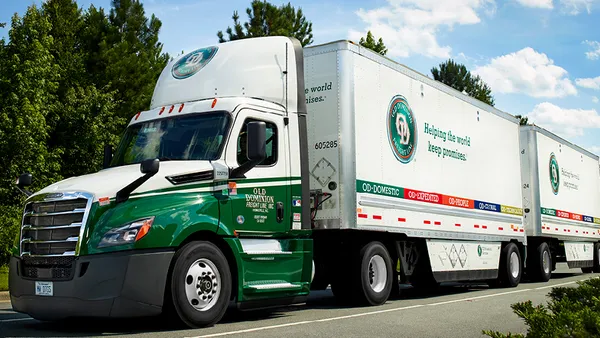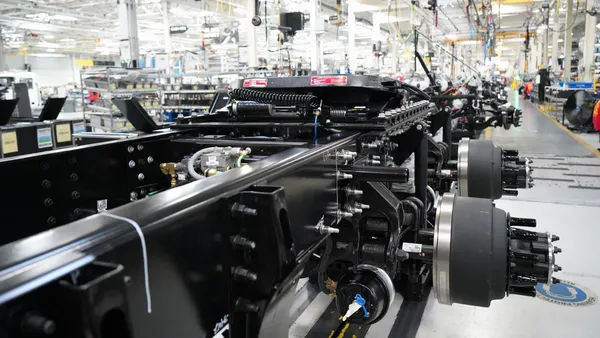Dive Brief:
- Union Pacific ramped up efforts to alleviate congestion at the Port of Long Beach in California, announcing last week it's rolling out incentives for weekend container drop-offs and adding capacity to support the port's efforts to encourage shippers to move cargo via rail instead of truck.
- The railroad is offering a $60 refund for every container in-gated over the weekend until the end of the year, according to a statement Oct. 25. Union Pacific recently expanded its hours to align with the Long Beach port's 24/7 schedule in an effort to ease congestion.
- Union Pacific also said it will add capacity "as needed" to support a joint initiative from the Port of Long Beach and Utah Inland Port Authority, encouraging shippers to send cargo destined for intermountain states to Salt Lake City by rail, according to an emailed statement from railroad spokesperson Kristen South. That capacity could be in the form of longer or new trains, South said.
Dive Insight:
Union Pacific and other railroads have said they're equipped to handle record volumes arriving to the ports, but shippers and truckers aren't removing and returning containers quickly enough.
"We can take the volume; we can handle the volume efficiently," Eric Gehringer, executive vice president of operations at Union Pacific, said in a recent earnings call, adding that velocity hit its highest level in nine months.
But dwell times for boxes were up 40% in Q4 compared to earlier this year, and the time it took for drivers to return chassis was up 20%.
"We need the back end of the supply chain with warehouse capacity, warehouse labor, dray capacity and dray labor to be there to answer that call," Gehringer said.
Trucking firms tell a different story. J.B. Hunt said its rail providers in Q3 were slower in movement than anticipated, and the railroads similarly struggled with labor constraints.
Union Pacific has been working with the Long Beach port to reduce congestion on the West Coast, recently moving to a 24/7 operation to support expanded hours at the port. On Wednesday, the railroad, port and Utah Inland Port Authority announced an initiative to encourage shippers to use rail to Salt Lake City, where cargo can then be picked up by truck for further distribution.
The ports said in a statement they're looking to cut down on the number of vehicles clogging Long Beach, as shipments bound for Utah, Nevada, Colorado and Idaho often move by truck.
Noel Hacegaba, deputy executive director of the Port of Long Beach, said in a reporters call Wednesday the new initiative could replace thousands of truck moves and "gives us the ability to evacuate containers ... as quickly as possible." The strategic partnership, still in its early stages, will use tracks owned by Union Pacific and will "help the Port of Long Beach become the longest port in the nation," he said.
Still, railroads contend the actions they're taking won't be enough to address congestion unless shippers and logistics providers start taking steps to move cargo more efficiently.
"[T]he measures we take to maximize efficiency in our handling of cars across our network and within our terminals are largely rendered meaningless if receivers are not ready to pick up those containers from our facility," BNSF CEO Katie Farmer wrote in an August letter to the Surface Transportation Board.













